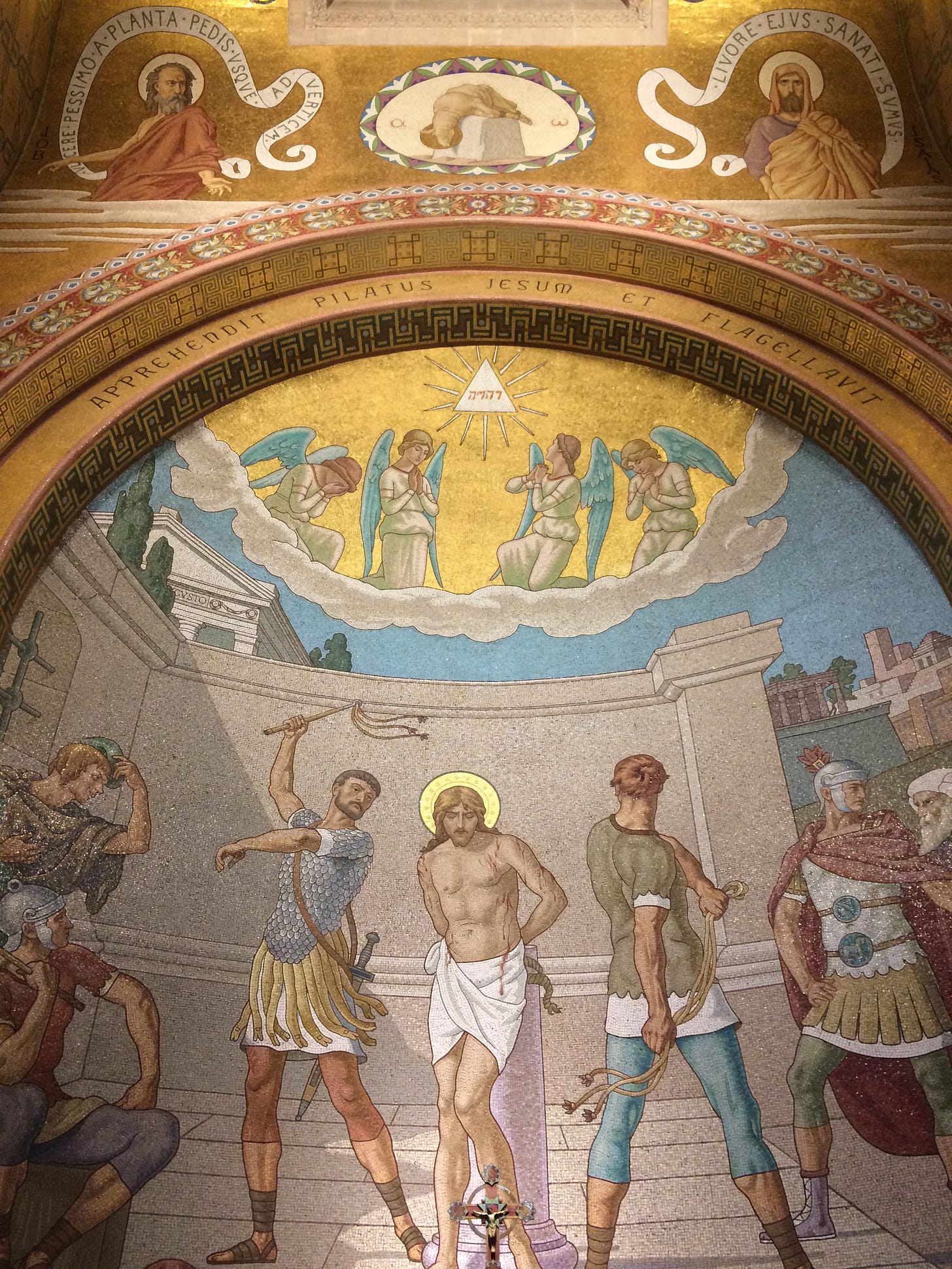It is a short verse that adorns the archway in this mosaic, but it is not for that brevity without its pain and sorrow. “Pilate took Jesus and scourged Him.” This is depicted in the main image, which is itself rife with tragic imagery.
Angels in heaven weep in horror as they see the Son of God subject to such humiliation. Soldiers on earth look on in glee or indifference as the Son of Man is battered, bruised, and beaten. The very Name of God in Heaven—YHWH—shines forth radiantly, as the Image of God on earth is hidden behind so much Blood. The placement of the altar Cross below implies that Jesus is all the while looking toward the consummation of all this torture—to the fulfillment of His mission.
Jesus stands here as the silent Lamb of God, being prepared for slaughter, thus fulfilling the Old Testament types recalled above the archway. He is at the same time the Alpha and Omega, the First and the Last, the Beginning and the End. What a mystery is here! To paraphrase St. Bernard, the eternal God, Who cannot suffer in Himself, suffers with us in His Son.
Job, who knew not Christ yet prefigured Him in his own passion, recalls how Satan plagued him with “horrible wounds from the soul of the foot to the crown of his head.” Isaiah the Prophet illuminates that it is by such wounds that we are healed and saved in Christ. As appalling as this scene is, then, for those with eyes to see, it is our salvation. It is our hope! For through these scourges and lashes, through this abasement and humiliation, Christ gave us a way to be renewed and raised up, if we are but united to Him in it all.
Despise not your sufferings, therefore, and waste them not. For they make you like unto Christ the Lamb of God, Who takes away the sins of the world.



